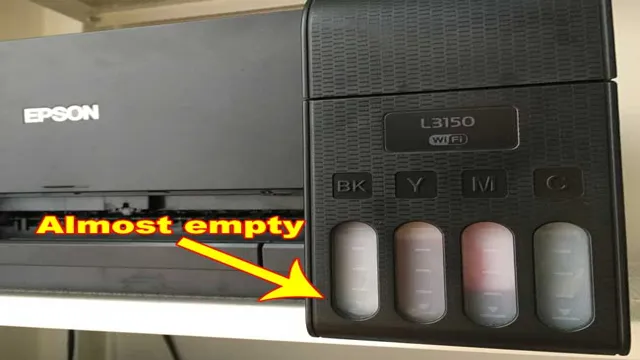Have you ever experienced the annoyance of waiting for your Brother printer to start printing? It could be a real pain, especially if you are in a hurry. Slow data reception is one of the most common issues that Brother printer users face. Data reception is the process of receiving the printing data from your computer to the Brother printer.
If the data received by the printer is slow or intermittent, the printer tends to slow down or stop altogether. In this blog, we will explore the possible reasons why your Brother printer is experiencing slow data reception and offer some easy solutions to help you resolve the problem.
Symptoms of Slow Data Reception
If your Brother printer seems to be taking forever to receive data, there may be several reasons for it. One of the most common is network traffic. When your printer is on a network with other devices, data from all devices may cause congestion and slow down your printer’s data reception.
Another reason is an outdated printer driver. Printer drivers are necessary software components that enable your computer to communicate with the printer. If the driver is outdated or incompatible, it may cause the printer to receive data slowly.
Additionally, low printer memory can also be a culprit. If the printer’s memory is full, it may take longer to receive and process data. Finally, issues with network settings or configurations can impact data reception.
Whatever the reason for your Brother printer’s slow data reception, addressing the issue quickly can help you get back to work with minimal downtime.
Long Printing Times
Are you tired of waiting endlessly for your printer to complete a job? Long printing times can be frustrating and can even slow down productivity in the workplace. This often occurs due to slow data reception, which can be caused by a variety of issues. One common symptom of slow data reception is the printer printing out pages at a snail’s pace, often taking a longer time than usual to complete a task.
Another symptom is the printer constantly stopping and starting, causing the job to take much longer than expected. If you’re experiencing any of these symptoms, it’s important to address the issue right away. Perhaps the printer needs a firmware update, or there’s an issue with the network connection.
Whatever the problem may be, it’s important to solve it as soon as possible to lessen downtime and avoid frustrating delays. Remember, a quick and efficient printer means more work done in less time and more productive output.

Frequent Stalling or Freezing
If you frequently experience stalling or freezing while using your devices, it may be due to slow data reception. This can be a frustrating experience, especially when you’re in the middle of an important task or streaming your favorite show. Slow data reception can be caused by a variety of factors such as inadequate network coverage, outdated software, or high network traffic.
To resolve these issues, you can try resetting your device, updating software, or switching to a more robust network plan. These solutions can help to ensure that you have a smooth and uninterrupted experience with your devices. Don’t let slow data reception slow you down- take steps to prevent these issues so you can enjoy your devices to the fullest.
Print Jobs Fail to Start
If you’ve ever encountered a printer that stubbornly refuses to do its job, you know how frustrating it can be. One of the most common reasons for print jobs failing to start is slow data reception. This occurs when the data being sent to the printer becomes bogged down or delayed, causing the printer to wait too long for the necessary information.
Signs of slow reception include long delays between hitting “print” and the job actually starting, as well as incomplete or garbled prints. To fix this issue, check that your printer is properly connected and make sure you’re not sending too much data at once. If all else fails, you may need to upgrade your printer’s memory to better handle the information you’re sending it.
By addressing slow data reception, you can help ensure your printer works smoothly and efficiently every time you need it.
Reasons for Slow Data Reception
If you’re experiencing a slow data reception with your Brother printer, there could be several reasons causing the issue. First, check the printer’s memory capacity as it could be overloaded, leading to slow data reception. Also, ensure that the settings are optimized to handle larger files.
Another problem that could be causing this issue could be the network connectivity or the external factors affecting it. The poor signal strength of the Wi-Fi network or paper jam in the printer could also result in slow data reception. If you’re still experiencing the problem, it’s recommended to update the printer driver or reset the devices that the printer is connected to.
Overall, it’s essential to troubleshoot each issue one-by-one to resolve the slow data reception problem effectively.
Network Congestion
Network congestion can be one of the most frustrating issues to face when trying to access data online. There are several reasons for slow data reception, but network congestion is often the main culprit. This is because more and more people are now accessing the internet, which puts a lot of strain on the network.
As a result, the data packets can take longer to travel between different nodes, causing delay and buffering. Network congestion can also impact the quality of the connection, resulting in slower speeds, and even dropped connections. It can be compared to a crowded road where traffic moves slowly, making it difficult to reach a destination on time.
To avoid network congestion, it is important to use a reliable internet service provider and consider upgrading to a faster internet connection if you frequently encounter slow speeds.
Outdated Drivers or Firmware
One of the most common reasons for slow data reception is outdated drivers or firmware. Drivers and firmware act as a liaison between the hardware and software of your computer, ensuring that they can communicate with each other effectively. However, after some time, manufacturers may release new updates that improve performance, patch up any security vulnerabilities, and enhance compatibility with newer software versions.
If you neglect to update your drivers and firmware, data reception can become slow because your system won’t be optimized for the latest advancements. Fortunately, most manufacturers make it easy to update your drivers and firmware, usually through automatic updates or through downloading the latest versions from their website. Ensuring your drivers and firmware are up-to-date is crucial for optimal system performance, and it ensures you don’t miss out on improved functionality that could significantly benefit you.
Insufficient Memory or Processing Power
One of the reasons for slow data reception could be insufficient memory or processing power. When a device doesn’t have enough memory or processing power, it struggles to handle the amount of data being sent to it. This can cause delays in receiving data and lead to slower overall performance.
Additionally, if multiple applications are running at the same time, this can further strain the device’s resources and cause it to slow down even more. To avoid this issue, it’s important to regularly clear out any unnecessary files or applications, and upgrade to a device with adequate memory and processing power for your needs. By doing so, you can ensure that your device is operating at optimal levels and receive data quickly and efficiently.
Solutions for Slow Data Reception
If you’re experiencing a slow data reception with your Brother printer, don’t worry, there are solutions available to fix the problem. Start by checking the connectivity of your printer with your computer or network. A weak or unstable connection can cause delays in data transmission.
Ensure that your Brother printer is set up correctly and connected to the proper network. Another solution is to update your printer driver software by downloading and installing the latest version available on the manufacturer’s website. This update can fix any bugs or glitches in the software that might be causing the slow data reception.
Additionally, you can adjust your printer’s settings to reduce the quality of the print jobs, as higher-quality print jobs require more data and can cause delays. By following these simple steps, you can solve the issue of slow data reception with your Brother printer and enjoy faster and streamlined printing experiences.
Perform a Network Check
One of the most frustrating things about using technology is when you experience slow data reception. There are a number of reasons why this might happen, but one of the first steps you should take is performing a network check. This will help you determine if there are any issues with your network connection, such as signal interference or a weak Wi-Fi signal.
If there are problems with your network, you may need to troubleshoot your modem or router, or even consider upgrading your equipment. Another thing you can do to improve your data reception is to clear your cache and cookies, which can help speed up your internet speed. By taking these steps, you can hopefully improve your overall experience with technology and ensure that your data reception is lightning fast.
Update Printer Drivers and Firmware
When it comes to slow data reception, updating printer drivers and firmware can be an effective solution. Over time, these drivers and firmware can become outdated, causing your printer to struggle with receiving and processing data at the speed you need. By updating them, you can improve the efficiency of your printer and reduce the amount of time you spend waiting for your documents to print.
It’s important to note that the process of updating drivers and firmware can vary depending on the model of printer you’re using. Make sure to check the manufacturer’s website for specific instructions and compatible downloads. Taking the time to update your printer’s software can save you frustration in the long run and ensure that your printer is functioning at its best.
Let’s face it, waiting for a printer can feel like watching paint dry – so take action and update your printer today for a smoother printing experience.
Upgrade Printer Memory or Processor
If you’re experiencing slow data reception on your printer, upgrading the memory or processor can help. By increasing your printer’s memory, it can handle larger print jobs and improve its overall performance. Similarly, upgrading the printer’s processor can help speed up data reception and output.
It’s important to note that not all printers are designed to allow for upgrades, so be sure to check your printer’s specifications before investing in new hardware. Additionally, consider the cost-benefit of upgrading versus purchasing a new printer altogether. While upgrading memory or a processor can be beneficial, it may not be cost-effective in the long run for older models or those with limited upgrade options.
So, before you decide on an upgrade, weigh your options and determine what will work best for your specific needs.
Conclusion
In conclusion, it seems that the Brother printer has become more of a brother-in-law – slow, unresponsive, and hard to deal with. Perhaps it’s time to upgrade to a newer model, or at least send it to a tech-savvy cousin for a much-needed tune-up. After all, no one wants to wait longer than a sibling rivalry to get their documents printed.
“
FAQs
Why is my Brother Printer printing at a very slow speed?
There could be several reasons for a slow print speed including network connectivity issues, outdated drivers, or a high-quality print job.
How do I improve the print speed on my Brother Printer?
You can improve your printer’s speed by reducing print quality, setting the printer to draft mode, reducing the number of pages being printed, and updating the printer drivers.
What can cause a Brother Printer to have slow receiving data times?
Slow data receiving can be due to network connectivity issues, faulty drivers, or problems with the device’s memory capacity.
How can I troubleshoot slow data receiving issues on my Brother Printer?
You can try restarting your printer, checking your network connectivity, updating your printer drivers, and limiting the number of print jobs in the printer queue to troubleshoot data receiving issues.


